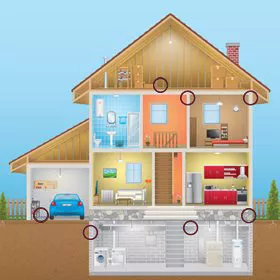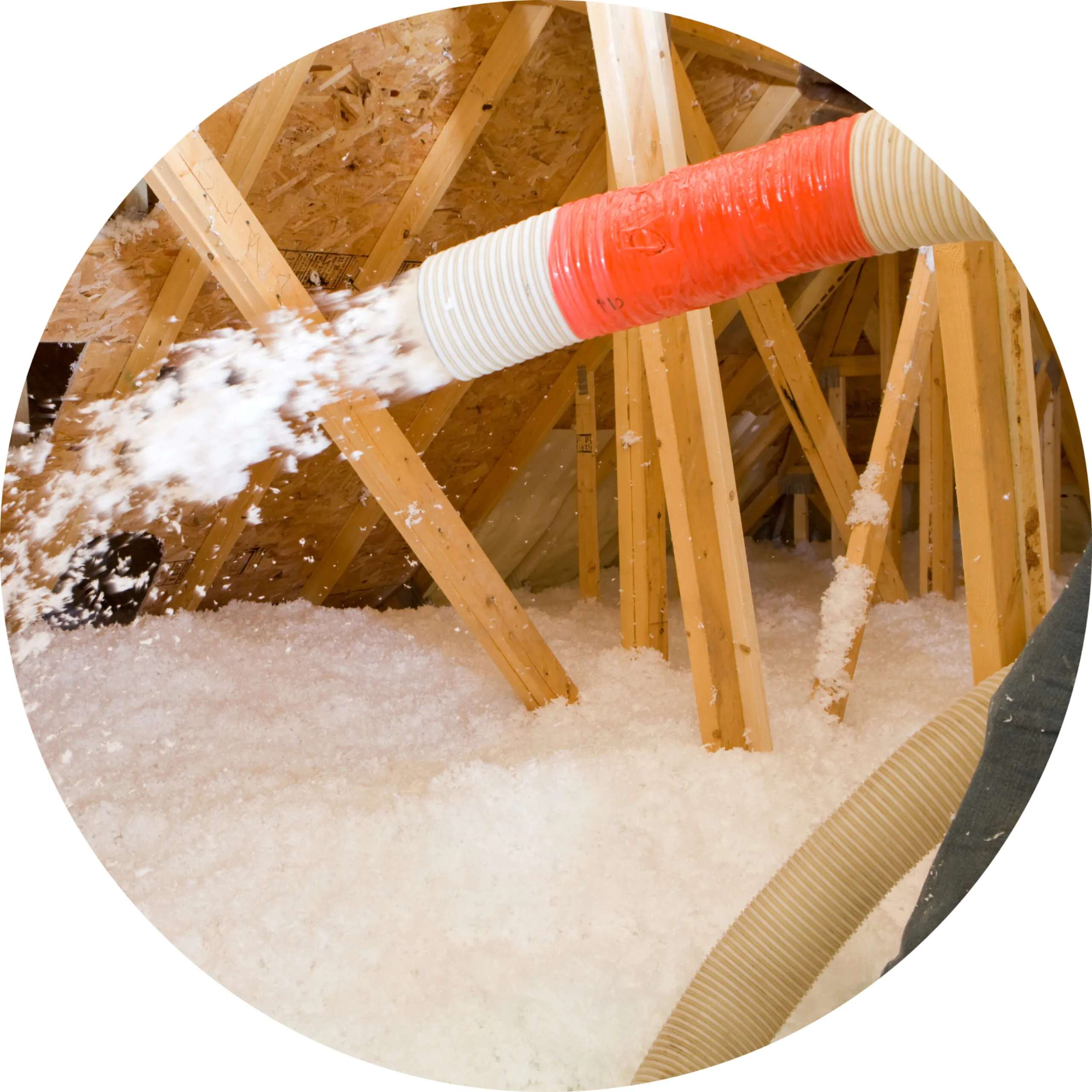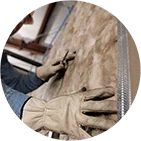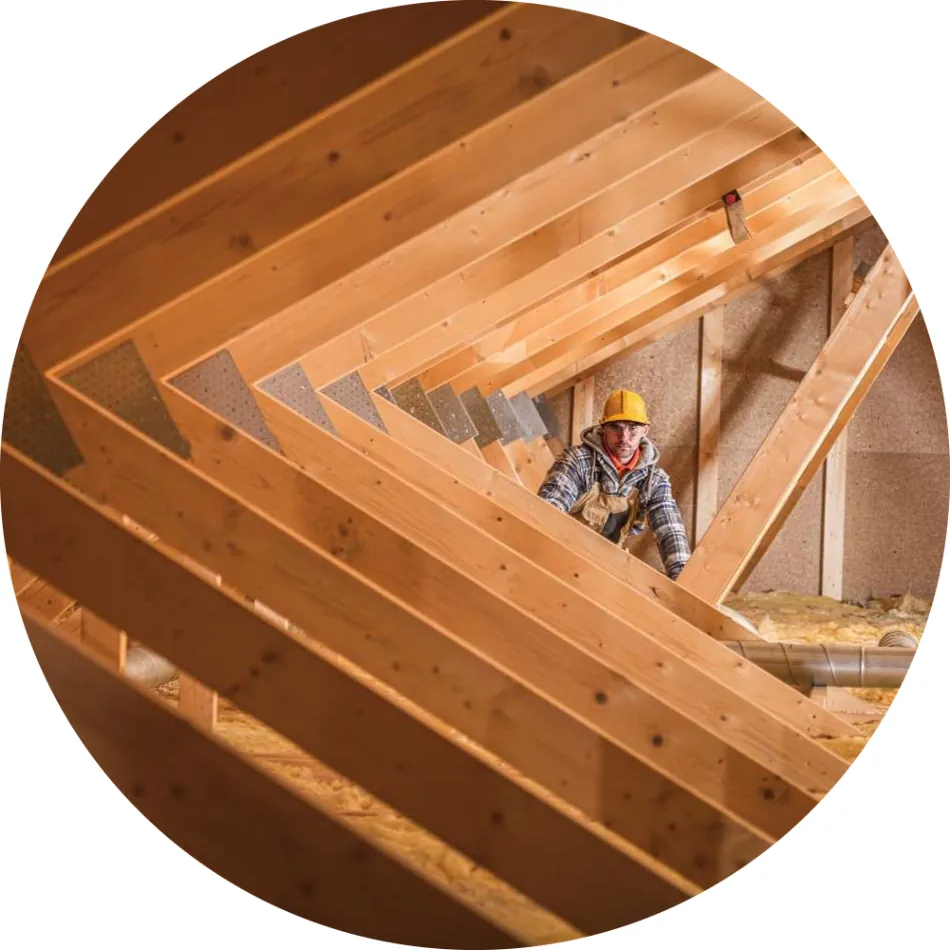Your attic’s insulation is an essential part of your home’s ecosystem. When properly installed and maintained, it controls the temperature inside your home.
Insulation has thermal resistance per unit area, otherwise known as R-value. This has a drastic effect on your home’s energy efficiency. We’ll look at different R-values, the types of insulation and how to determine the R-value your home needs.
What Is R-Value?
R-value measures how well a barrier resists heat flow. The higher the R-value of a type of insulation, the better it is and the more it will lower your energy bills. Proper insulation in your home will result in better energy efficiency and reduce the load on your HVAC system.
Types of Insulation for Attics
Your home may have several types of insulation. Let’s take a look at the options.
- Fiberglass insulation: Fiberglass insulation is made from extremely fine glass fibers and is one of the most common batt insulations in attics and floors.
-
- Pros: It’s commonly available, non-flammable, resistant to moisture damage and effective at blocking heat flow.
- Cons: It can irritate the skin if you encounter it.
- Cellulose insulation: Cellulose insulation is made of 85% recycled materials that are shredded and made into fibers. It’s often made into loose-fill insulation that can fit in compact spaces.
-
- Pros: It’s environmentally friendly.
- Cons: The insulation’s abilities decrease when it absorbs moisture. It must be replaced every five years.
- Spray foam insulation: Spray foam comes in open- and closed-cell forms. Sprayed foam insulation is injected into an area where it expands and solidifies. It works well in walls and around pipes and ducts.
-
- Pros: It’s excellent for insulating walls and abnormally shaped areas. It’s also energy-efficient.
- Cons: It contracts with age, pulling away from the framing.
- Radiant barrier insulation: This highly reflective material bounces radiant heat instead of absorbing it. It’s made from aluminum foil and is usually installed in attics to reduce cooling costs.
-
- Pros: It helps keep your attic cooler in the summer.
- Cons: Because the radiant barrier is close to the dew point, it can collect more moisture.
What Your Attic in California Needs
Because of California’s mostly warm and dry climate, the R-value recommendations are different than you may find on the East Coast. The R-value recommendations for California include:
- Coastline: Uninsulated attic: R49, insulated attic: R38
- Northeastern California: Uninsulated attic: R60, insulated attic: R49
- Central California from north to south: Uninsulated attic: R49, insulated attic: R38
- The area surrounding Lake Tahoe: Uninsulated attic: R60, insulated attic: R49
As of January 2023, California’s mandatory minimum insulation R-value is R20. Meeting local building codes and energy standards is essential for avoiding potential fines.
Factors Affecting Your Attic’s Insulation Needs
In California, many factors can affect your insulation needs. Insulation must be tailored to your home to maximize effectiveness and energy efficiency.
- Climate and weather: Climate and weather have a huge impact on insulation. For example, California’s average R-value is R49, while Maine’s average R-value is R60 due to its cold, humid weather.
- Home design and age: Newer homes are built with energy efficiency in mind and, therefore, have better insulation and building practices. Older homes need additional insulation to maximize efficiency.
- Energy efficiency goals: Investing in your insulation can lead to long-term savings on your utility bills. Aim for higher R-values for better energy efficiency. The ROI of energy-efficient insulation can reach up to 117%.
How to Determine the Right R-Value for Your Attic
If you want to know your current insulation’s R-value, you need a measuring tape. If you have fiberglass or cellulose insulation, you can estimate the R-value by multiplying the insulation depth (in inches) by 3. This will give you a general idea of how much R-value you have.
For example, if you have 13 inches of insulation, that equals an R-value of approximately R39.
You can always consult a professional insulation contractor. They can perform an insulation assessment, which includes determining your R-value, checking your insulation’s condition and making recommendations for improvement.
Some online tools for measuring R-value include the ENERGY STAR® website or Lowe’s R-value insulation calculator. You enter your insulation depth in inches, and it will provide an estimated R-value. Use an R-value recommendation chart for California to determine if you have an appropriate amount of insulation.
Benefits of Proper Attic Insulation
Ensuring your home has proper attic insulation is essential for:
- Energy savings: By limiting heat transfer, insulation can save you money on your utility bills. When less air from inside your home escapes outside, your home stays more comfortable. Also, the EPA estimates that you can save an average of 15% on heating and cooling costs with proper insulation.
- Increased comfort: Insulation makes your home more comfortable by keeping warm or cool air inside rather than letting it escape through the attic. It can help reduce cold spots and drafts.
- Environmental impact: When you use less energy, you’re shrinking your carbon footprint. Less energy usage reduces reliance on electricity, gas and propane. Your HVAC system emits fewer emissions, as well.
Proper insulation is essential for maintaining a comfortable home for your family. With the potential for energy savings and a lower carbon footprint, insulation is a great investment.
Our experienced team can help you properly insulate your home. Remember: An investment in your home is an investment in your comfort and happiness.
If you need help determining your R-value or require an insulation assessment, contact the professionals at OJ Insulation.









